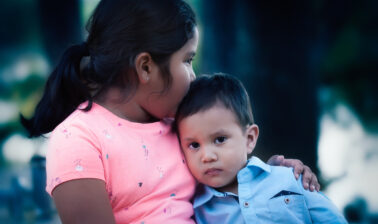Infographics
Understanding & Preventing ACEs
Published on: August 22, 2022.
As the number of ACEs increases
so does the likelihood of negative health outcomes
About this Data Insights
Adverse childhood experiences (ACEs) are potentially traumatic events that can affect a person’s mental and physical health, well-being, and success in adulthood. The COVID-19 pandemic disrupted family life in ways that greatly increased exposure to ACEs for millions of children. Many children have lost a parent or caregiver and been exposed to economic hardships such as food insecurity and homelessness. ACEs can also have lasting, negative effects on health, 5 of the 10 leading causes of death are associated with ACEs.
This infographic explores the lasting effect ACEs have on a person. It also offers methods for preventing ACEs through protective measures and solutions implemented early in life. Key approaches to reducing ACEs include understanding risk factors and protecting young people from violence and abuse.
ACEs stand for Adverse Childhood Experiences: Centers for Disease Control and Prevention, Fast Facts: Preventing Adverse Childhood Experiences, April 2022
ACEs also include aspects of the child’s environment: Centers for Disease Control and Prevention, Fast Facts: Preventing Adverse Childhood Experiences, April 2022
Adverse childhood experiences are common and add up
Those at greater risk for experiencing multiple ACEs: Merrick MT, Ford DC, Ports KA, et al. Vital Signs: Estimated Proportion of Adult Health Problems Attributable to Adverse Childhood Experiences and Implications for Prevention — 25 States, 2015–2017
What does it mean to grow up with gun violence: Rajan S, Branas CC, Myers D, Agrawal N. Youth exposure to violence involving a gun: evidence for adverse childhood experience classification. J Behav Med. 2019
How has the pandemic affected children and their health: Krause KH, Verlenden JV, Szucs LE, et al. Disruptions to School and Home Life Among High School Students During the COVID-19 Pandemic — Adolescent Behaviors and Experiences Survey, United States, January–June 2021
Adverse childhood experiences are linked to many health problems
As the number of ACEs increases: K. Hughes, M.A. Bellis, K.A. Hardcastle, et al., The effect of multiple adverse childhood experiences on health: a systematic review and meta-analysis Lancet Public Health, August 2017
ACEs can negatively impact: Centers for Disease Control and Prevention, Fast Facts: Preventing Adverse Childhood Experiences, April 2022
Toxic Stress definition: Center on the Developing Child at Harvard University. ACEs and Toxic Stress: Frequently Asked Questions.
Adversity & toxic stress linked to increased health risks: Centers for Disease Control and Prevention: Preventing Adverse Childhood Experiences (ACEs): Leveraging the Best Available Evidence, 2019.
Leading causes of death are associated with ACEs: Centers for Disease Control and Prevention, Fast Facts: Preventing Adverse Childhood Experiences, April 2022
Adverse childhood experiences can lead to health risk behaviors
Adverse childhood experiences can lead to health risk behaviors: Centers for Disease Control and Prevention, We Can Prevent Childhood Adversity, March 2022
Smoking
Heavy drinking
Substance misuse,
Risky sexual behavior
Suicidal thoughts
How to prevent adverse childhood experiences
Preventing ACEs could potentially reduce the number of health conditions in adults: Centers for Disease Control and Prevention, Vital Signs: Adverse Childhood Experiences (ACEs): Preventing early trauma to improve adult health, November 2019
NOTE: Data comes from - BRFSS 2015-2017, 25 states, CDC Vital Signs, November 2019.
Depressive disorder
Chronic Obstructive Pulmonary Disease
Chronic Heart Disease
Kidney Disease
Overweight/Obesity
Preventing ACEs: Centers for Disease Control and Prevention: Preventing Adverse Childhood Experiences (ACEs): Leveraging the Best Available Evidence, 2019.
More Related Content
See More on: Behavioral Health | Maternal and Child Health | Social Determinants of Health

